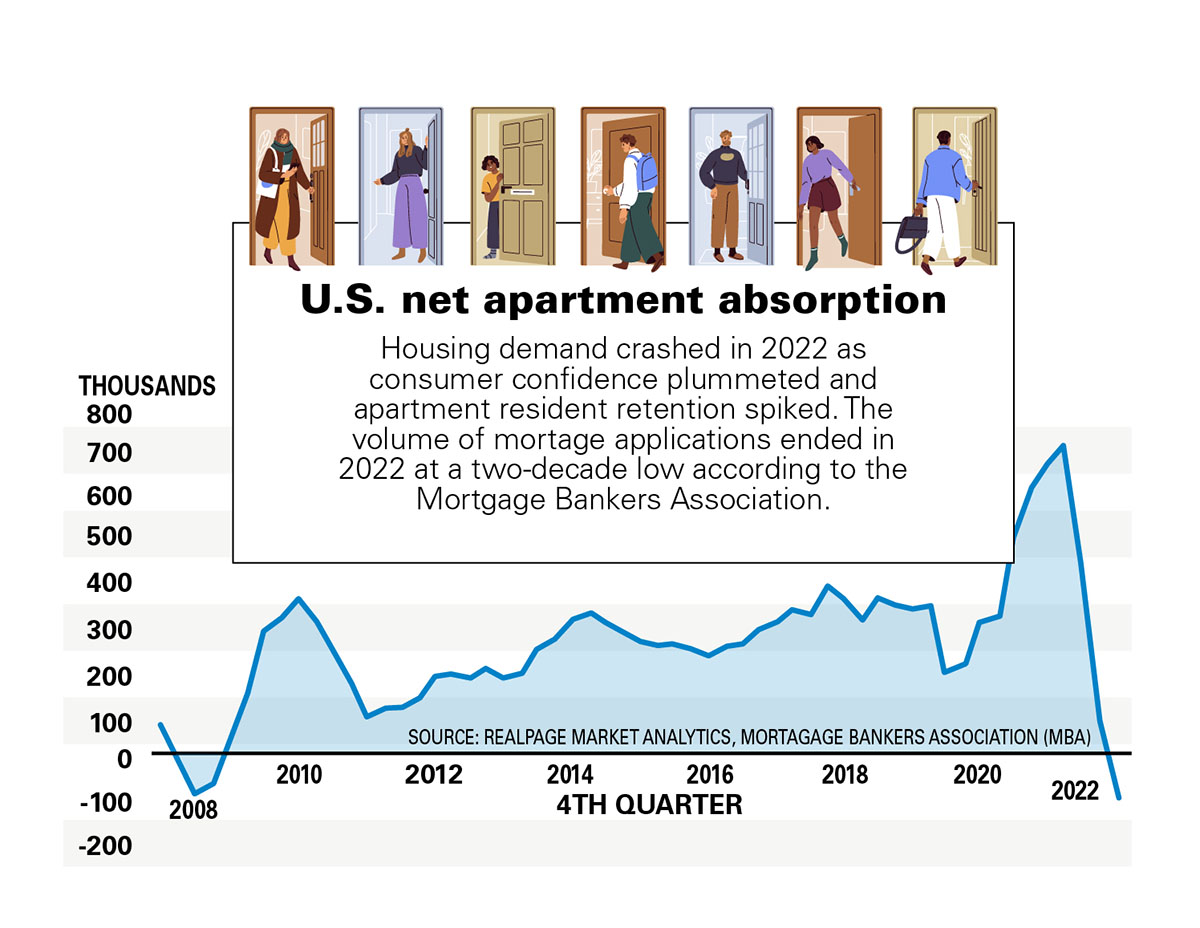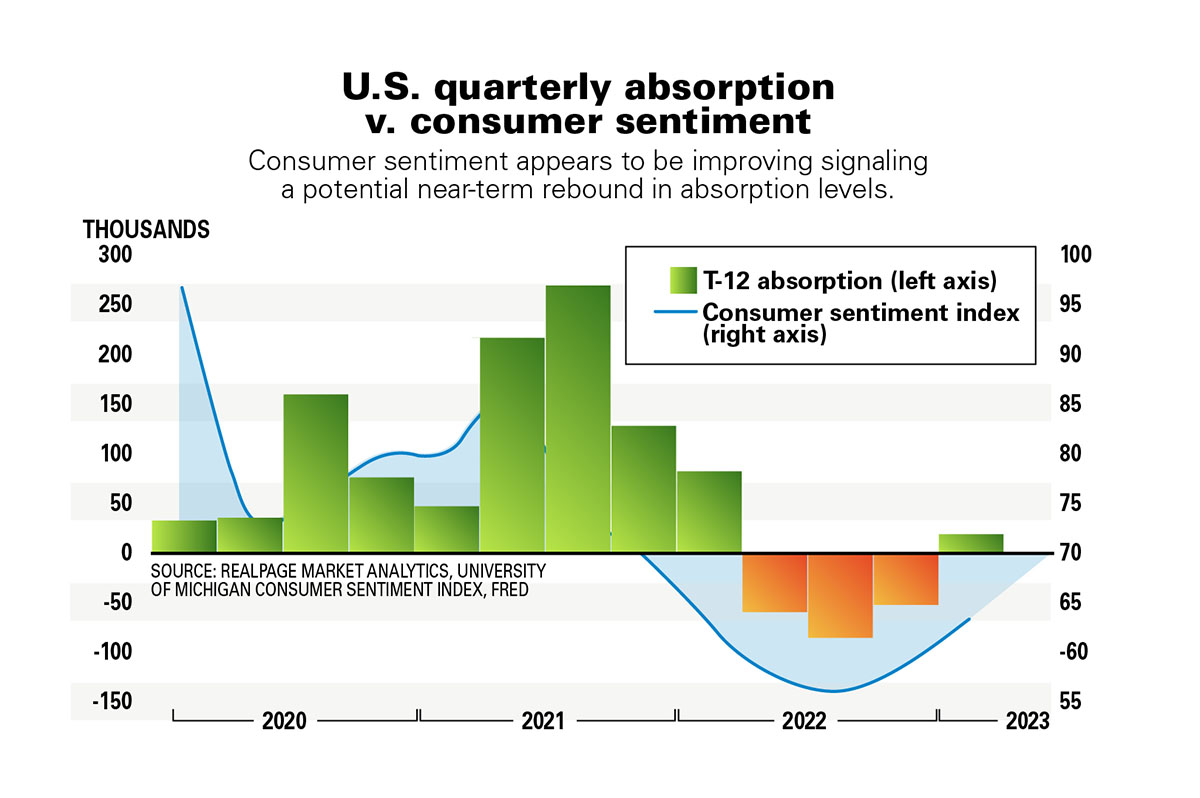A recent report by the Urban Land Institute has shined a light on recent growth in renter-by-choice households that is setting the past few years apart from prior cycles. The number of renters with an annual income of at least $75,000 rose by 48 percent to 11.3 million over the decade ending in 2020. And, even though there are 25 percent more units under construction in 2023 than the prior year, all of these units will target a financially privileged professional class, says ULI.
Instead of expanding America’s chronically undersupplied rental housing stock, demand from these higher income households has pushed moderate- and lower-income households out of supply-constrained areas and made it nearly impossible to build affordable apartments, says the report.
Adding to long-standing issues including high land prices, regulations and NIMBY activists that stymie the ability of the industry to produce housing for low- and moderate-income renters, a growing push for rent regulation is adding uncertainty to the near-term outlook for market-rate residential investment in a market already plagued with a housing affordability crisis.
Greg Brown, the National Apartment Association’s (NAA) senior VP of government affairs is advocating for the interests of both multifamily operators and those who rent in the U.S.A. by attacking the crisis on two fronts.
“One is to reduce barriers to construction and get more investment into development of rental housing at the local level. And that’s no small thing. We need 4.3 million apartments by 2035 to meet demand and when you have data that points to 75 percent of the land in cities around the country zoned for single-family housing only, that’s a pretty shocking statistic,” he said.
“The other side is the demand issue for low- and moderate-income families. When supply is lacking and rents are unaffordable, these renters use the Section 8 program. While we are great supporters of Section 8, we know changes are needed to attract private sector participants, which in turn opens up more options for low-income families,” he said.
NAA is lobbying for improvements to the Section 8 inspection process, which Brown notes is a big problem at the local level. “Before a voucher holder can actually occupy a unit, the housing provider must hold the unit open unoccupied awaiting inspection. We support changes that would allow local inspectors to cover Section 8 inspection requirements, thereby streamlining the process so that housing providers aren’t sitting with empty units losing rents for weeks and sometimes longer, waiting for inspection.
“It’s about giving resources to Public Housing Authorities to manage the program and creating incentives for private sector participants to come back in. These can range from having a dedicated person to answer their questions to financial incentives, whatever can provide a better experience and make it easier to work with a very complicated program.
“Right now, it’s so complicated that smaller owners don’t want the hassle of dealing with the program,” said Brown, explaining that NAA is focused on the voucher side of the program, not the project-based side, because vouchers can be used anywhere.

COVID fallout
The NAA is continuing its multi-year advocacy efforts to remove the federal 30-day notice requirement for evictions at properties covered by the CARES Act. Because of a drafting error, the Biden Administration and many judges around the country interpret the notice to be a permanent requirement for federally backed properties.
“Some localities are stretching out the eviction moratorium, either extending what was put in place during COVID or imposing their own moratoriums or something similar,” said Brown. When the CARES Act was passed it had its own 120-day temporary moratorium on evictions that included a 30-notice to vacate requirement, he explained.
“It’s not equal across the board. Some judges say this requirement has ended and does not need to be followed, but in other places, Texas, for example, it is still in place and viewed to be a permanent part of the law. Obviously, that complicates matters for owners and operators depending on where their properties are located. The average notice period for eviction is eight days nationwide.
“A lot of emphasis has been put on this provision as the only way residents have any protection around eviction, but that’s not really true. Places like New Jersey that have no notice period at all also have some of the strongest protections in the country and frankly if you’re trying to lower the number of evictions, this is not the way to do it,” he said, adding that the proper way is through better rental assistance—helping renters before they get in trouble and can’t pay rent.
“We introduced a bipartisan bill to remove the 30-day notice to vacate requirement last year in the House and are intent on pursuing it again this year,” he said.

Supreme Court
More uncertainty over federal energy efficiency requirements exists around climate change. “The most recent example is what’s called the Waters of the U.S. rule (WOTUS), an interpretation by the EPA around what are considered navigable waters under the Clean Water Act, which casts doubt on where one can develop, how one can develop and what kind of mitigations have to be undertaken to develop at all,” said Brown.
Although a Supreme Court case, Sacket v. EPA, is pending right now over the issue, the EPA moved forward on January 18 and issued a final rule revising the definition of WOTUS, expanding the agency’s authority to regulate streams, wetlands and other water bodies and complicating compliance standards.
This has increased uncertainty for developers, property owners and small businesses as they wait to hear from the Supreme Court. Some view the Supreme Court’s decision on definitions in this case as a ruling on the reach of federalism and state’s rights.
“While we and everyone in our industry support protecting our waterways and the Clean Water Act, we see this as a gross overreach that could imperil the critical housing we need in our nation right now,” said Brown.
Other energy efficiency requirements could put undue pressure on existing properties, especially older properties, said Brown. “It’s one thing to increase efficiency in new construction, but it’s another to require older properties to come up to a code that is incredibly expensive without some subsidy or other resource, and it can render a property not financially viable. So, it’s our job to stay engaged in the debate and education of housing policymakers and push for a favorable response,” he said.
Brown notes that residents are revealing their preferences for the environmental aspects of environmental, social and governance (ESG) standards by favoring more eco-friendly apartments. One example is that the number of apartment properties with electric vehicle charging station has more than doubled since 2017, according to data from CoStar.
“The demand for electric vehicles has pushed the market to respond by installing charging stations and in our view that is the way changes should happen. The market tells us what direction we should go and we do it, and in this case it’s certainly good for everyone. But if we are only going to regulate our way to ESG, we’ll see lots of negative impacts on smaller owners,” he said.
Author Wendy Broffman













